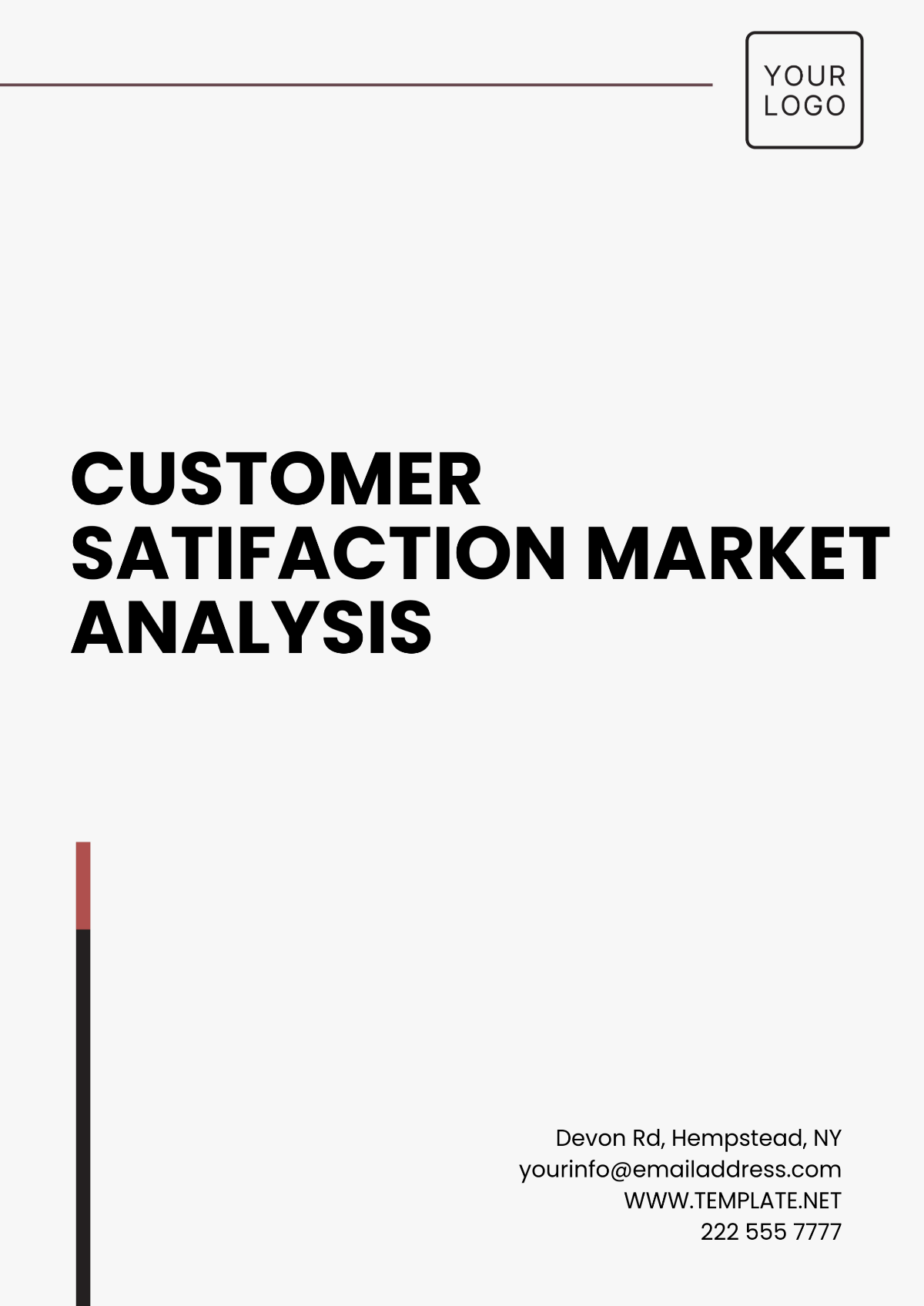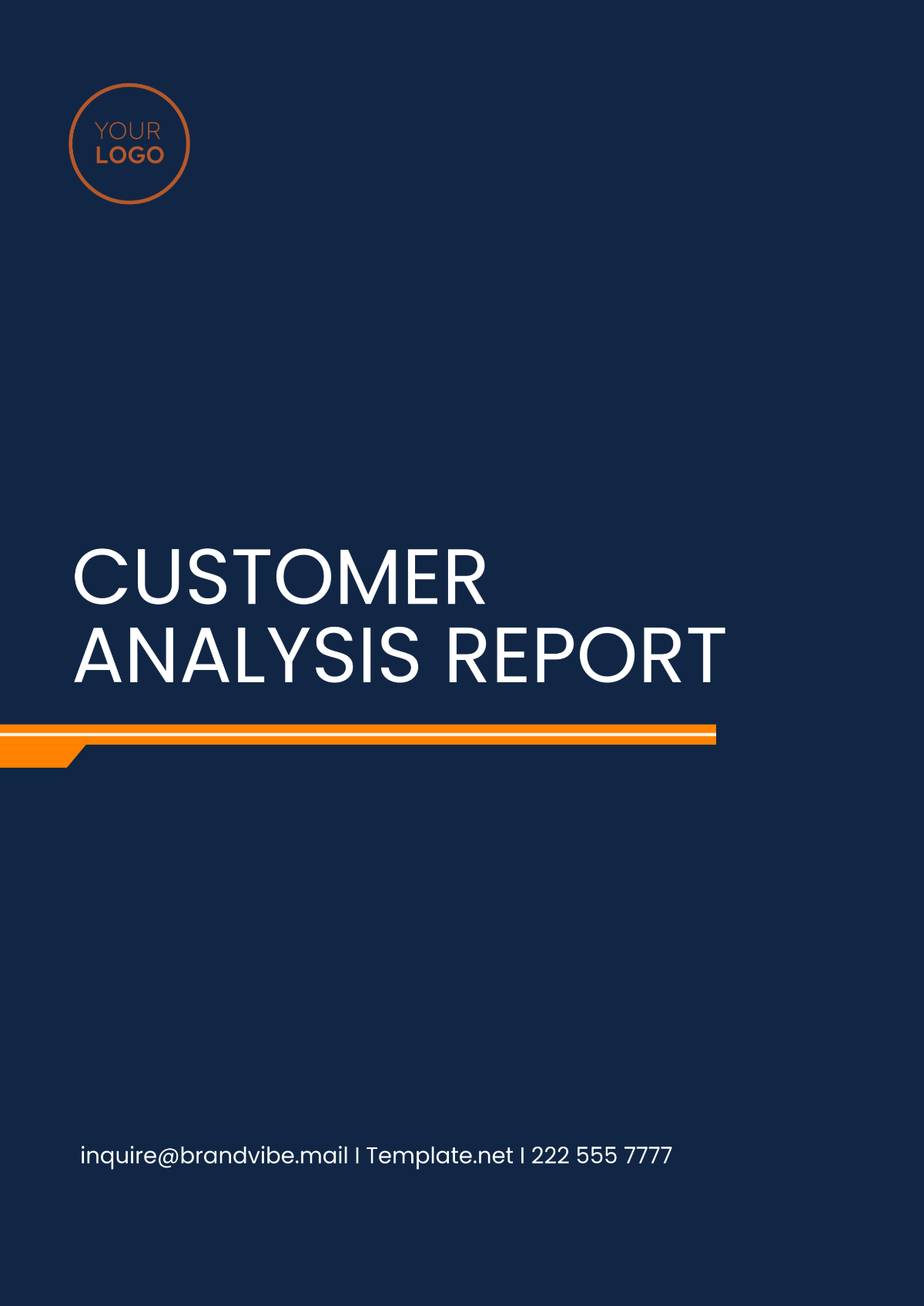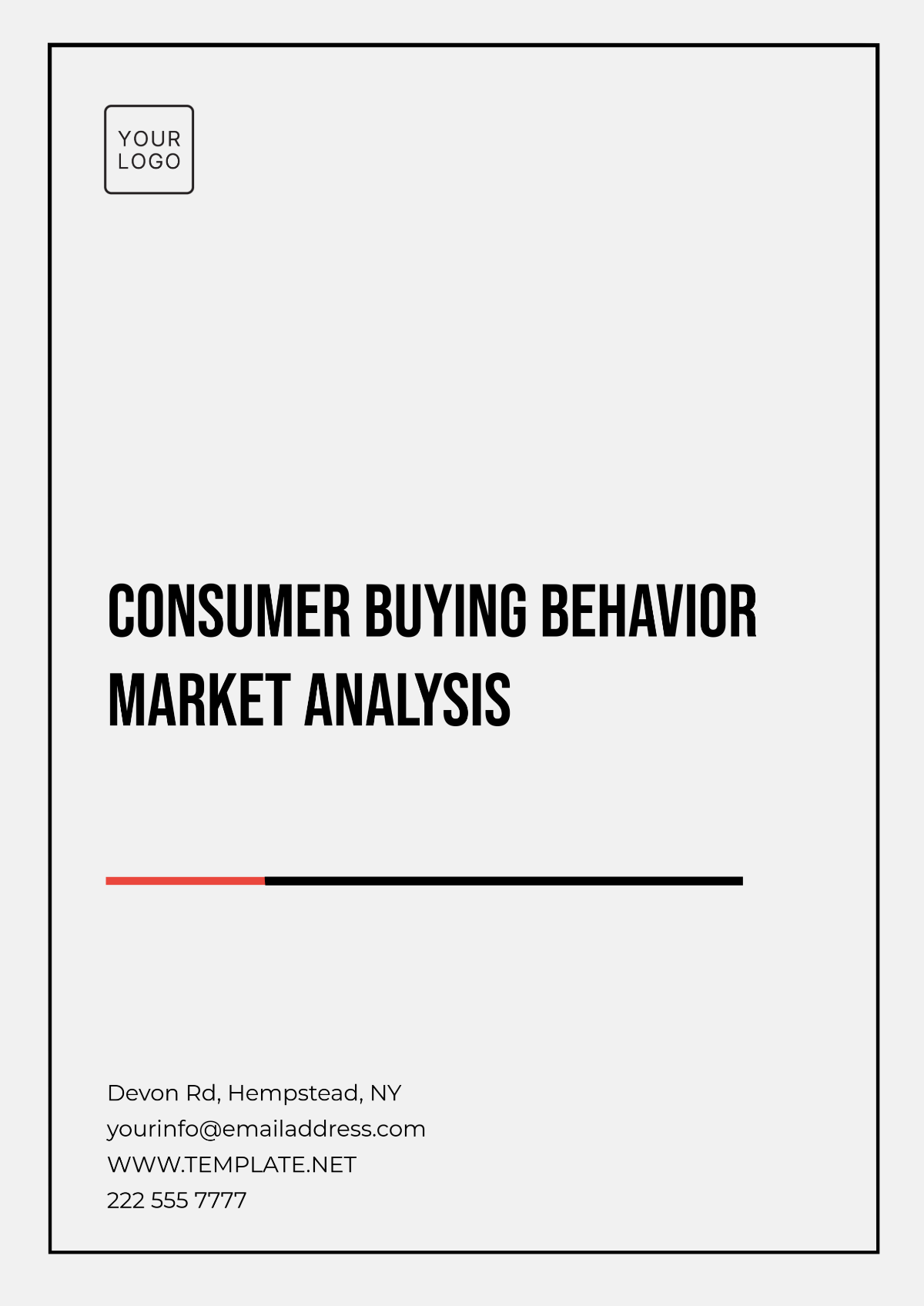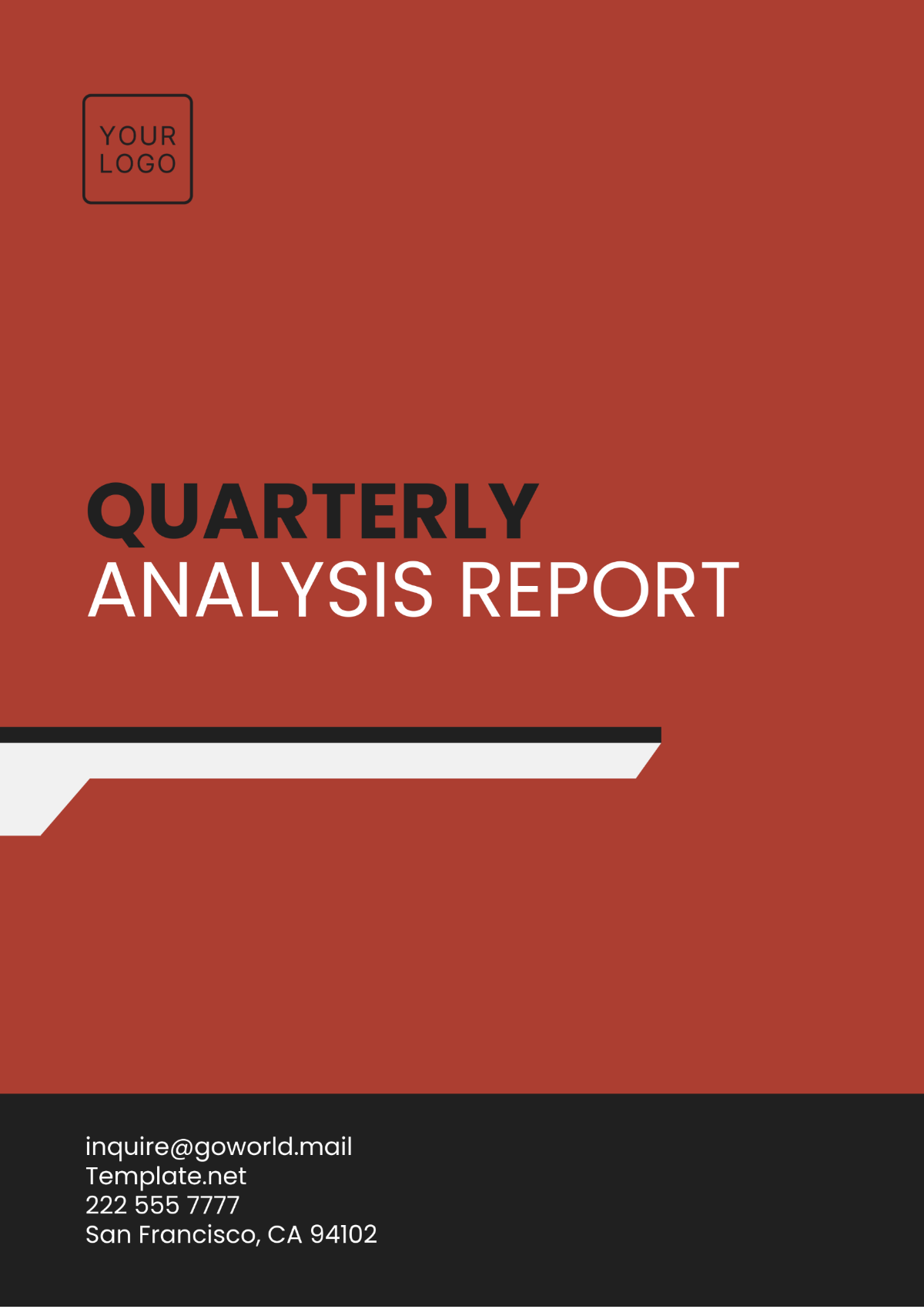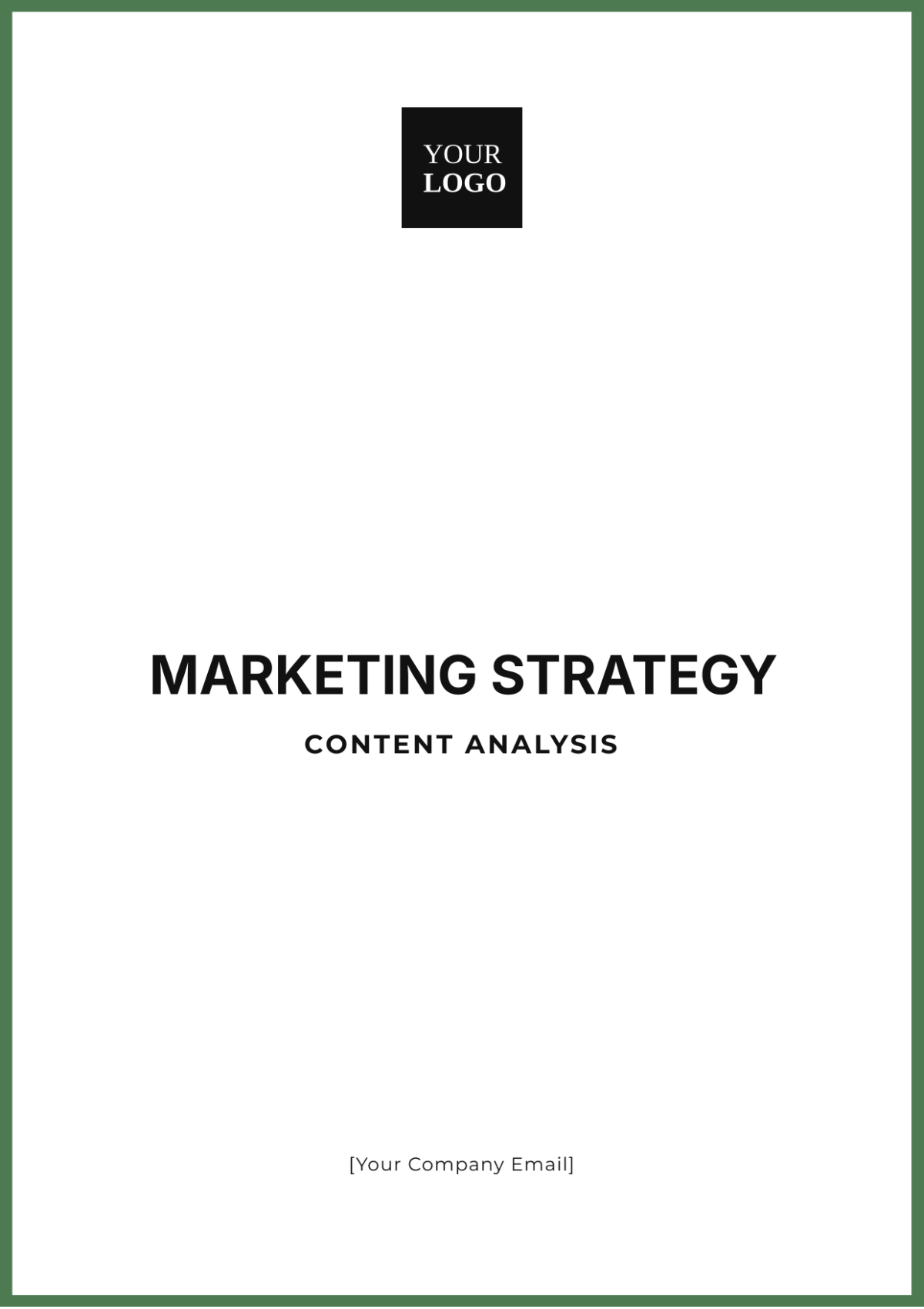Marketing Comprehensive Strategy Analysis
1. Executive Summary
This comprehensive Marketing Strategy Analysis aims to provide [Your Company Name] a roadmap to increase market share, revenue, and brand equity. Through a thorough assessment of our internal and external environment via SWOT analysis, we have identified key strengths such as robust brand recognition and an efficient supply chain. Conversely, weaknesses like a limited product range and a relatively low online presence have also been highlighted.
Our comprehensive market research, involving online surveys and focus groups, further substantiates the need for a more aggressive digital presence. A majority (60%) of respondents expressed a preference for online shopping, and 40% indicated that quality trumps price when making purchasing decisions. These insights are instrumental in shaping our marketing objectives, which include a 10% increase in market share, a 25% boost in online sales, and a 15% enhancement in customer engagement metrics by the end of the fiscal year.
By leveraging digital channels such as social media advertising, Pay-Per-Click (PPC) campaigns, and Search Engine Optimization (SEO), we aim to engage more effectively with our primary target market of Millennials aged 24-35 and our secondary target of professionals aged 36-50. Additionally, competitive analysis indicates that while our competitors like [Competitor A] and [Competitor B] have their own strengths, they also present weaknesses that [Your Company Name] can capitalize on.
In conclusion, this Marketing Strategy Analysis lays the groundwork for a multi-faceted plan aimed at driving growth, revenue, and customer loyalty for [Your Company Name]. Our recommendations are tailored to respond to the current market conditions, consumer preferences, and competitive landscape, making it a pivotal guide for the company’s marketing efforts moving forward.
2. Introduction
Scope
This document is specifically designed to present a comprehensive strategic marketing approach for [Your Company Name] for the upcoming fiscal year, [Year]. In a rapidly changing marketplace where consumer preferences are constantly evolving, it is imperative for [Your Company Name] to stay ahead of the curve. This strategy aims to provide not just a snapshot of where the company stands in relation to its competitors but also a detailed action plan for how it can achieve its business objectives. From SWOT analysis to market research, from setting objectives and identifying target markets to a nuanced understanding of the 4 Ps (Product, Price, Place, Promotion), this document offers a 360-degree view of the entire marketing landscape. By following the guidelines and recommendations herein, [Your Company Name] is expected to experience growth in market share, revenue, and customer engagement metrics.
Contact
For any further queries, clarifications, or discussions related to this marketing strategy document, please contact [Person’s Name], who holds the position of [Position] in the company. They can be reached via email at [Your Email] or by phone at [Your Phone Number].
Date
This strategic marketing analysis has been prepared and finalized as of [Date]. It serves as a guide for the fiscal year [Year], and regular updates and evaluations will be conducted to ensure its continued relevance and efficacy.
The aim is to make this document a living tool that evolves with the company’s goals and market conditions. Therefore, feedback from all stakeholders is not only welcome but actively encouraged.
3. SWOT Analysis
In this chapter, we delve into the SWOT Analysis a foundational tool that helps us understand the internal and external factors affecting [Your Company Name]. SWOT stands for Strengths, Weaknesses, Opportunities, and Threats. By examining these four areas, we gain valuable insights into the current market positioning of [Your Company Name] and the strategic moves it can make to achieve its goals. This SWOT Analysis will serve as the cornerstone for the development of our comprehensive marketing strategy for the fiscal year [Year].
Comprehensive SWOT Analysis Table for [Your Company Name]
Strength
Item | Description |
|---|---|
Strong Brand Recognition | Established brand value aids in easier market penetration and customer retention. |
Efficient Supply Chain | Streamlined supply chain ensures timely delivery and minimizes storage costs. |
Weaknesses
Item | Description |
|---|---|
Limited Product Range | A narrow range of products restricts market appeal. |
Low Online Presence | Inadequate digital engagement limits reach to younger, tech-savvy audiences. |
Opportunities
Item | Description |
|---|---|
Emerging Markets | New markets offer the potential for growth and diversification. |
Technological Advancements | Utilizing new technologies can improve operational efficiency. |
Threats
Item | Description |
|---|---|
Increased Competition | The rising number of competitors poses a risk to market share. |
Economic Downturn | A volatile economy can negatively affect consumer purchasing power. |
4. Market Research
We explore the critical aspect of Market Research which aims to offer a quantitative and qualitative understanding of consumer behavior and preferences as it pertains to [Your Company Name]. The backbone of any successful marketing strategy is informed decision-making, and for this, data is invaluable. Our methodology includes two key research tools: online surveys and focus groups. With a substantial participation of 500 respondents, our research efforts are designed to be both broad and deep, ensuring statistical significance and insights that are genuinely actionable.
The chapter will delve into key insights, such as the percentage of consumers who prefer online shopping, as well as those who prioritize quality over price. These insights are not only indicators of current market sentiment but also directional aids for strategic planning. Understanding our consumer base will allow us to create more effective and targeted marketing campaigns, ensuring a better return on investment and greater customer satisfaction.
Methodology: Online surveys, Focus Groups
Participants: 500
In sum, 60% of respondents prefer online shopping and 40% of respondents think quality is more important than price.
5. Objectives and Goals
This chapter outlines the Objectives and Goals that serve as the cornerstone of [Your Company Name] marketing strategy for the fiscal year [Year]. With a focus on increasing market share by 10%, boosting online sales by 25%, and enhancing customer engagement metrics by 15%, these ambitious yet achievable targets will guide our efforts and provide a clear metric for success. By setting forth these objectives, we establish a framework that allows us to measure our progress and continually optimize our marketing initiatives.
6. Target Market
The Target Market forms the focus of [Your Company Name] marketing strategy for the upcoming fiscal year. Identifying our primary and secondary markets is crucial for tailoring our marketing initiatives for maximum impact. Our primary market comprises Millennials, aged between 24 and 35, while our secondary market focuses on Professionals within the 36 to 50 age bracket. This segmentation allows us to craft specialized campaigns that resonate with these specific demographics, thus optimizing reach and engagement.
Primary Market: Millennials, age 24-35
Secondary Market: Professionals, age 36-50
7. Competitive Analysis
Competitive Analysis is a vital component for understanding [Your Company Name] standing in the market. By examining the strengths, weaknesses, and market share of key competitors, we can identify potential opportunities and threats, thereby refining our marketing strategy for greater effectiveness. The information garnered in this section serves as an invaluable tool for benchmarking our performance and positioning [Your Company Name] strategically in the marketplace.
Competitive Analysis Table
Competitor | Strengths | Weaknesses | Market Share | Opportunities for [Company Name] | Threats for [Company Name] |
|---|---|---|---|---|---|
[Competitor A] | Strong online presence | Limited physical stores | 20% | Leverage physical stores | Online market capture |
[Competitor B] | Extensive product range | Poor customer service | 15% | Exploit customer service angle | Diverse product offerings |
[Competitor C] | High customer loyalty | High pricing | 10% | Competitive pricing | Customer retention |
8. Marketing Mix (4P's)
The Marketing Mix table outlines the key strategies for each of the 4 Ps, offering a comprehensive look at how [Your Company Name] plans to address each fundamental element of its marketing approach for the fiscal year [Year].
Marketing Mix Table
Component | Strategy | Description |
|---|---|---|
Product | Introduce new product lines | Expand our portfolio to meet diverse customer needs and tap into new market segments. |
Price | Implement dynamic pricing | Use real-time market data to adjust pricing, optimizing for demand and supply conditions. |
Place | Enhance online marketplace | Upgrade the user experience on our online platforms to facilitate easier navigation and purchase. |
Promotion | Utilize social media and PPC campaigns | Leverage digital channels like social media and pay-per-click advertising to increase brand visibility and drive traffic. |
9. Budget and Financial Projections
This section lays out the financial roadmap for [Your Company Name] marketing strategies. This includes detailed costs and expected Return on Investment (ROI) for each key initiative, ensuring fiscal responsibility while aiming for maximum impact.
Item | Cost (USD) | Expected ROI |
|---|---|---|
PPC Campaigns | 10,000 | 15% |
SEO | 8,000 | 10% |
10. Implementation Timeline
Milestone | Q1 | Q2 | Q3 | Q4 |
|---|---|---|---|---|
Market Research | ||||
New Product Launch | ||||
Marketing Campaign |
11. Monitoring and Evaluation
Monthly KPI Reports
Customer Feedback Surveys
12. Conclusion
This marketing strategy outlined in this document is designed to propel [Your Company Name] towards significant growth and market prominence. With clearly defined objectives, a focus on target markets, and a multi-faceted marketing mix, we have a roadmap that is both ambitious and achievable. Implementation is slated to begin in the first quarter (Q1) of the fiscal year, ensuring we seize the market opportunities as early as possible. To gauge the effectiveness of the plan and make any necessary adjustments, monthly reviews will be conducted. These periodic evaluations will measure our progress against the set KPIs and objectives, allowing us to optimize the strategy for maximum impact. Overall, this comprehensive Marketing Strategy Analysis serves as a dynamic tool for enhancing [Your Company Name] market share, revenue, and brand equity.
13. Appendices (As Attachments)
Appendix A: Survey Questions
Appendix B: Financial Models
Approved By:
[Person's Name, Position]
[Date]
Prepared By:
[Person's Name, Position]
[Date]
For queries and clarifications, contact:
[Person’s Name, Position, Email, Phone Number]
[Date]













